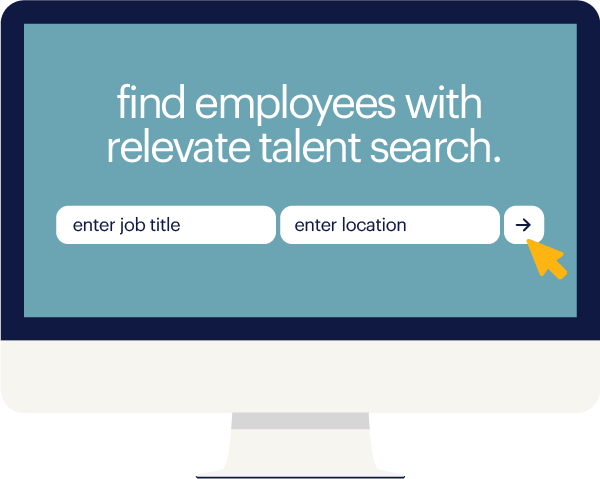Despite the increased adoption of automation, AI and other emerging technologies in the workplace, one fundamental principle still rings true: People power businesses. And nowhere is this more apt than in your human resources department — that team of professionals who serve as the critical link between your company and its people. With unemployment low and more jobs available than people with the skill sets to fill them, the value of HR professionals is becoming even greater as businesses look to gain a competitive edge in attracting and retaining top talent.
It shouldn't be surprising, then, that demand for the best HR candidates is growing dramatically, with some roles, like learning and development managers, expected to grow by 10 percent over the next decade. So what can you do to attract — and retain — top human resources talent?
Read on for four steps to address some of today's biggest recruitment pain points, so you can begin overcoming those challenges and get ahead of the pack.
make your salary and benefits competitive
Especially in the human resources arena — where it's people's jobs to know the ins and outs of salary and benefits — candidates know what it takes to get the compensation package they want. And when it comes to roles vitally important to your company's operations, like HR directors and recruiters, you have to make sure salaries are commensurate with the value they offer.
Auditing your company's compensation and benefits packages will give you perspective on what it takes to be competitive for both your industry and marketplaces. Once you've read the recent salary trends and leveraged a digital calculator to inform your decisions, you'll soon be in a much better position to attract the best candidates out there. Here are some steps you can do to make your salary and benefits competitive:
1. adjust your compensation levels
No one wants a candidate to walk away from your offer because a competitor put a bigger salary on the table, so adjust your compensation levels after your audit to make you a competitive player. Here are the best questions for kicking off the process:
- Have we set up our salaries to be commensurate with the role's expected workload, or is an entry-level admin making the same as an HR manager overseeing a team of three?
- Does our compensation package make people happy to come to work everyday and perform their best?
- Are we appropriately increasing salaries as workers advance within the company, which then helps us with employee retention?
2. make your employees' lives flexible
Tech has taken the workplace beyond the daily 9-to-5 grind, so beef up your benefits with opportunities for telecommuting and flexible work schedules. Even for HR managers, don't assume they need to be in the office day in and day out, now that they can use digital tools to seamlessly communicate with their teams and candidates.
3. prep for hot negotiations
Your top candidates likely have a few other offers on the table, so you need to prepare a list of additional benefits that your can offer in those late-stage negotiations. For example, if you just can't meet the candidate in terms of desired salary, try sealing the deal with a signing bonus or an extra week of vacation.
source passive candidates
Posting an open position on a job board is not going to trigger an avalanche of resumes like it did 10 years ago. So to be truly competitive in this market, you're going to have to prioritize recruiting passive talent — those who are too actively engaged with their current roles to seek out new opportunities. Here are some steps you can do to source passive candidates:
1. focus on upskilling internal hires
Knowing the ins and outs of your company and its culture is the job of your HR team, so formalize an internal recruiting program to engage candidates who already providing value every day. Even if there is a hard skills gap, identify employees who are eager to advance and take on greater responsibilities, and then lay out a strategy to upskill them with additional training and development. Your best admin could be your next great HR generalist.
2. partner with a staffing firm
It's easy to want to throw in the towel with so much change afoot, but there's plenty of help out there. Consider partnering with a staffing firm to tap a nationwide pool of passive candidates who won't know your role is available. Given their expertise in all aspects of recruitment and commitment to customer success, no one will take the time and care to understand your company culture and what a best-fit candidate means for you.
3. leverage referrals from your current superstars
Few people know how to network better than HR professionals, so build a referral program that incentivizes your current team to suggest people they know from their networks. (Oh, and did we mention that referral candidates stay with a company 25 percent longer than those who come from job boards?)
build your employer brand
Now that 91 percent of job seekers are researching companies online before applying to work for them, you're going to need to take ownership of your business's employer brand. Candidates in the HR space are going to be especially savvy in determining whether your brand and culture are the right fit for them — again, it's their job to know these things — so make sure you're marketing yourself as an employer of choice. Here are some steps you can do to build your employer brand:
1. respond to feedback on employer review sites
Before they head to your social accounts or employee portal, prospective candidates are going to check out reviews from your current and former employees. So make sure you're actively being a part of the conversation by leaving thoughtful, empathetic responses to any feedback, both positive and negative. Point out what your organization is doing to address the grievances and thank them for their honesty.
2. tell your stories
HR professionals are all about understanding people and their stories, so be sure to include them when defining what stories you include in your content marketing efforts. Show candidates why your company is such a great place by sharing success stories on a company blog, or launching a video series about recently promoted employees to highlight the professional development initiatives you offered that helped them advance their career.
3. market your recruiting efforts
Thinking about SEO, landing page conversions and social media engagement isn't just for marketing teams anymore. HR leaders can give their companies a big advantage in our digital world by using marketing strategies around personas (Where is our next HR manager getting their info online?) and content marketing (Have we posted our latest employee interview on LinkedIn?) to drive awareness of your culture and job openings.
use technology to optimize your recruitment process
Ignoring the digital recruitment tools readily available means that you're fine with candidates suffering through a poorly designed careers website or having to leave five voicemails to schedule an interview. (And no, that's not OK.) Yes, it's change to navigate, but once you have the right tools in place, you'll be amazed at how simplified and seamless your talent-finding operations will be. Here are some steps you can do to optimize your recruitment process:
1. automate time-consuming manual processes
The virtual assistants built into a number of today's digital tools can automate tasks like scheduling interviews and sending candidates their confirmation emails. Not only will this mean a better experience for the candidate, it will also give the rest of your recruitment team more time to focus on marketing your open roles, employee branding and networking.
2. add flexibility to the interview process
Today's job seekers are already stretched thin, so find ways to better accommodate their schedules. On-demand video platforms make early-round interviews a breeze by letting applicants record answers to your interview questions on their own schedule — making it much easier (and quicker) to determine the best candidates for an in-person interview.
3. expedite communications through texting
Recruiters are always looking for quicker ways to reach candidates, and texting is quickly becoming a popular way to do just that. While it may not be ideal for every situation, setting up a time to chat or sending an interview location can get a whole lot easier by texting.
the top 5 roles in human resources
Feeling better prepared to find the best HR employees in today's ultra-competitive market? Great! Now go even further down the rabbit hole with these articles, which take a look at how to hire for the industry's most in-demand positions:
compensation/benefits managerRemember what we said earlier about partnering with a staffing firm? If you're still feeling overwhelmed by your recruitment needs even after reading these insights, a staffing partner can help you get on the right track. Reach out to one of Randstad's experts in the human resources arena today to see what they can do to match you with your next great HR employee. Or, head over to our Find Employees portal to browse our pool of top-flight, vetted candidates right now.








